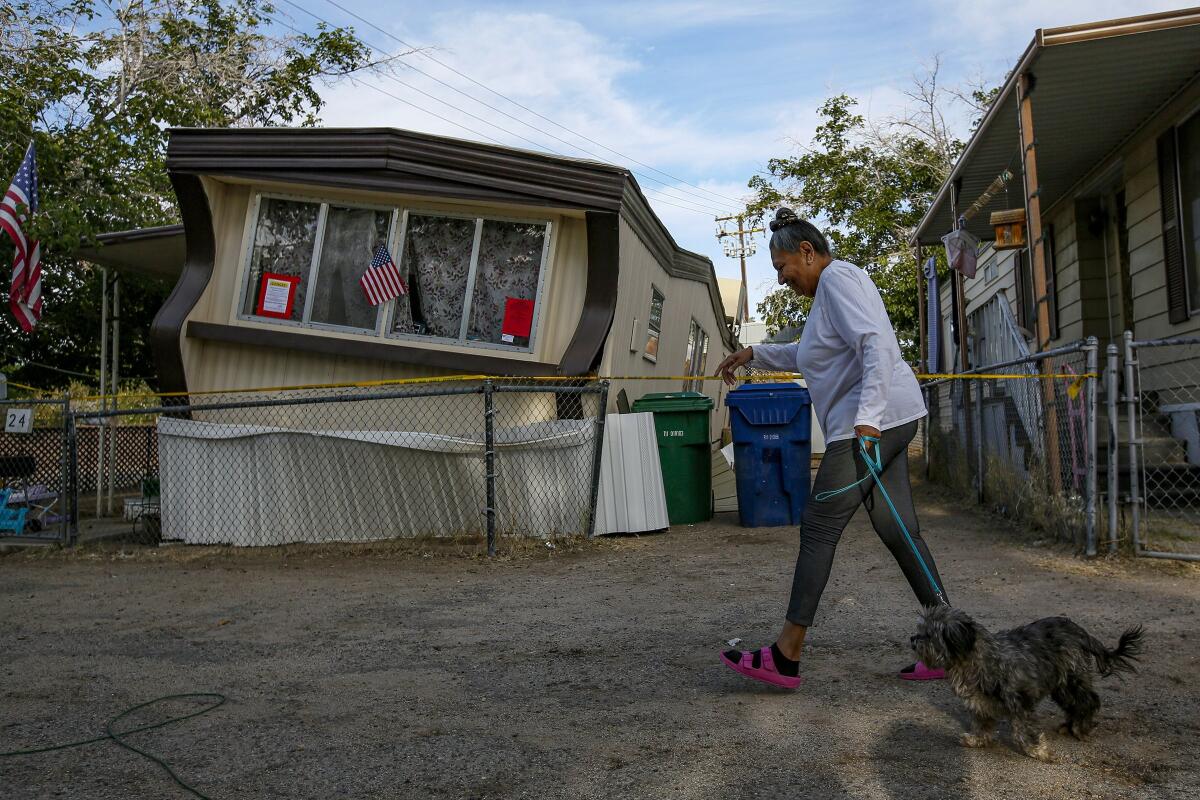The state is offering cash for earthquake retrofits. Here’s how to apply

Looking for some financial help making your home safer during an earthquake? Every year, the state’s Earthquake Brace and Bolt program offers a limited number of homeowners grants to help pay for seismically retrofitting their abodes. Applications for this year’s grants are being accepted now through November.
More than 1 million homes in California need retrofitting, an upgrade that takes about a day to complete, according to Janiele Maffei, chief mitigation officer for the California Earthquake Authority.
For the record:
2:24 p.m. Oct. 29, 2021An earlier version of this piece incorrectly stated that the supplemental grants for low-income homeowners were capped at $1,000. The maximum supplemental grant in Southern California is $2,650. It also incorrectly stated that part of the supplemental grant could be used before the project was completed to pay a deposit to a contractor. Instead, up to $250 from the grant can be used for the cost of one contractor’s bid.
A standard seismic retrofit can cost upward of $5,000 in Southern California, an expense too high for many. The Brace and Bolt grant can help.
The grant offers eligible homeowners who have not yet retrofitted up to $3,000 to help pay the costs of bracing and bolting. Low-income homeowners can qualify for an additional amount that varies according to the location and the extent of the work done. In Southern California, the supplemental grant is up to $1,125 for bracing only or up to $2,650 for bracing and bolting.
Assemblyman Adrin Nazarian (D-North Hollywood) encouraged Californians to retrofit their homes, even if they aren’t awarded a grant.
“It’s a minor cost, relatively speaking to the horrific damage and the hundreds of thousands of dollars of expenses that could be incurred once a home is damaged,” he said.
What is seismic retrofitting?
Earthquakes threaten to knock the frame of a house off its foundation and collapse the walls that support it, making it unstable and uninhabitable. Seismic retrofits address this problem in two ways: by bolting a house’s frame to its concrete foundation and by adding plywood braces to reinforce the walls in the crawl space beneath the first floor.
These two steps have proven to be the most effective method of mitigating damage from a large earthquake, Maffei said. If you own a home built before 1980, she said, you should have a reasonable suspicion that retrofitting is needed. Newer homes had to comply with building codes that were more attuned to earthquake risks.
To learn more about how you can keep your home safe, read The Times’ guide to seismic retrofitting.
Who’s eligible for the program?
To be eligible for the Brace and Bolt program, you must:
- Be able to show proof that you own the home and that it’s your primary residence.
- Live in the EBB program area.
- Live in a home that was built before 1980.
- Have a raised foundation or crawl space.
- Live in a house that sits on level ground or a slight slope.
- Not already have a seismically retrofitted home.
To qualify for the supplemental grant, you must also be able to verify that your annual income is $72,080 or less.
How to apply
To submit your application for the Earthquake Brace and Bolt program, visitearthquakebracebolt.com/register. The last day to apply is Dec. 1.
Because the program doesn’t have enough funding to meet the demand, homeowners’ applications will be randomly drawn from a lottery. The EBB site warns that applicants “must not obtain a permit or begin retrofit construction work before being accepted into the program;” otherwise, they will be declared ineligible.
The $3,000 grant won’t be paid until after the applicant submits proof that the work has been completed. A supplemental grant can be collected sooner, however, to reimburse the applicant for the building permit and up to $250 for the cost of one contractor’s bid. Those amounts will be deducted from the homeowner’s total grant.
Do I really need my home to be retrofitted?
If you have an older home with a crawl space, the short answer is yes.
As Steve Bohlen, acting state geologist with the California Geological Survey, puts it: Most of us won’t die in the earthquake, but how well you survive depends on how well you prepared.
The truth is, the Big One isn’t going to be some cataclysmic event in which a chunk of the state is split off from the continental U.S. It will, however, affect the life of nearly every Californian.
Bohlen said there’s a 99% chance that if you live in California, you’ll be affected by a 6.7 or larger magnitude earthquake within your lifetime.
Most Californians live within 30 miles of a fault, he said, “so being prepared and doing what you need to do to protect your life and property is critical.”
More to Read
Sign up for Essential California
The most important California stories and recommendations in your inbox every morning.
You may occasionally receive promotional content from the Los Angeles Times.










